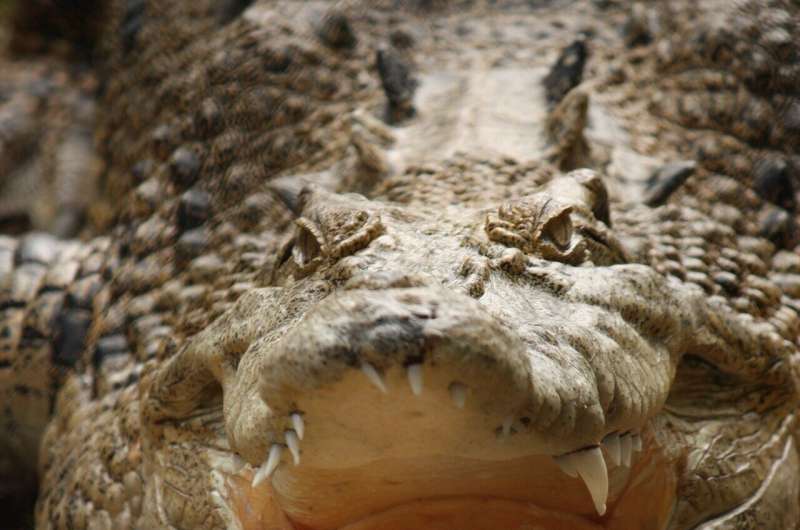This article has been reviewed according to Science X's editorial process and policies. Editors have highlighted the following attributes while ensuring the content's credibility:
fact-checked
trusted source
proofread
Crocodile genetics study to inform population management

The results of a long-range genetic study of Queensland's estuarine crocodiles have shown they can be described broadly as six populations living within 12 distinct bioregions.
The study—"Genetic structure and connectivity of the estuarine crocodile (Crocodylus porosus) in Queensland"—was led by the Department of Environment and Science in collaboration with CSIRO, Australia's national science agency.
The study also found approximately 91% of Queensland crocodiles live within 50 kilometers of where they hatched.
Program Coordinator Wildlife Monitoring and Research Simon Booth said there is evidence of connectivity between adjacent sub-populations, but that connectivity declines with distance.
"Although estuarine crocodiles are capable of moving anywhere along Queensland's coastline, the study has redefined what we know about Queensland's crocodile population," Booth said.
"Crocodiles in the Proserpine and Fitzroy River have been genetically isolated from other populations, and the study found they have the highest number of related individuals through decreased immigration from surrounding areas.
"Importantly, the genetics study has shown where crocodiles come from, where they go and how far they travel.
"This information can help us manage local populations, and we will use the findings to help inform the management of crocodiles.
"The Queensland Government will continue to help keep people safe while ensuring the ongoing survival of crocodile populations in the wild.
"Almost 80% of Queensland's crocodile population is located north of Cooktown and in the Gulf of Carpentaria, with around 20% located along the coastline between Cooktown and Rockhampton.
"To support our successful crocodile research and public safety initiatives, we are investing an additional $4.475 million over the next three years.
"This new funding is on top of our investment of more than $20 million since 2015 to manage our population of estuarine crocodiles.
"Crocodiles should be expected anywhere in Croc Country, and we encourage visitors and locals entering crocodile habitat to Be Crocwise in every choice."
CSIRO Senior Research Scientist Luke Lloyd-Jones said the study was a great collaboration.
"The study integrated ecological and management knowledge with exciting genetic data generated from DNA samples," Lloyd-Jones said.
"This data coupled with advanced analytics allowed us to gain insights into how Queensland's crocodiles are connected across the species range both historically, through patterns of genetic variation, and more recently, via the distribution of close relatives."
Fast facts:
- 1,176 genetic samples were used for analysis in the study from 10 of the 12 crocodile bioregions in Queensland.
- The samples were collected by DESI wildlife officers and also from historical samples held by the Queensland Museum.
- The study showed there is no evidence of southern expansion of crocodile populations below the Fitzroy River in Rockhampton
- A recent population study estimated Queensland's crocodile population to be between 20,000 to 30,000.
More information: Study: The genetic structure and connectivity of the estuarine crocodile (Crocodylus porosus) in Queensland2018–2020 report
Provided by CSIRO
















